Hemileccinum subglabripes is a long name for a great edible bolete that's easy to identify. Read on and I'll explain what you need to know.
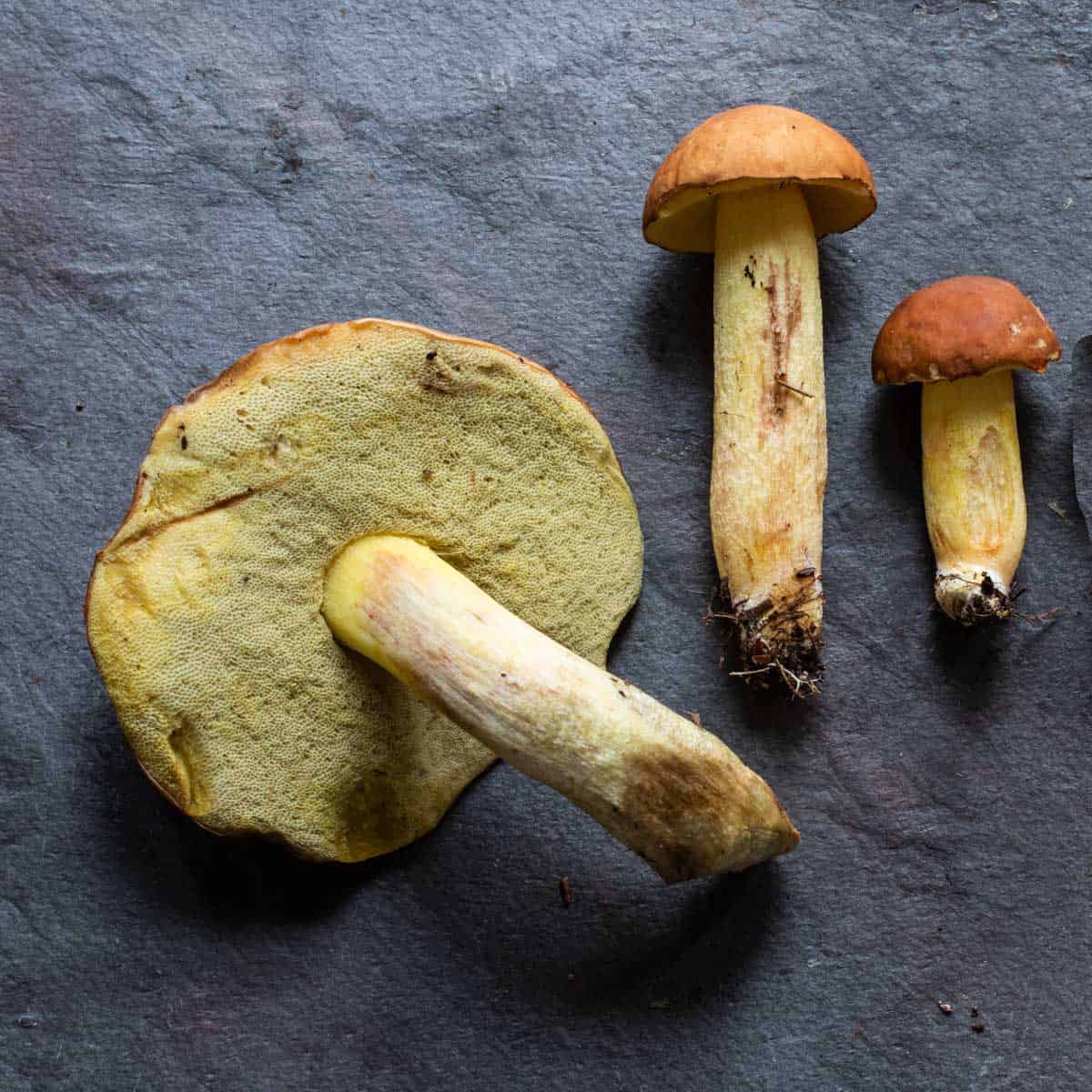
Throughout my experience hunting mushrooms in Minnesota, I can definitely say I have seen a greater variety of boletes than any other mushroom. There are a ton of different species though, and they can be difficult to identify. Their colors may shift and change with age, after being cut or bruised, yellow can turn to green, pink to brown.
As well when dropped in a bag with other mushrooms or having been jostled around a bit, many will stain and change color as well and I have come home a number of times with a few unidentifiable, black bruised boletes.
These striking yellow boletes were a great find a couple years back, and were a great exercise in bolete identification.
Story goes that my friend and I went up to Northern Minnesota during the late summer to hunt lobster mushrooms and Leccinums. We were in the northern ⅓ of Minnesota-an area I don't get to explore often. Because the northern portion of the state is a very different terrain, similar to taiga, we tend to see a somewhat different variety of fungus than in the southern ⅔ of the state, where it's mostly hardwoods, as opposed to the conifer, birch and aspen woods of the north.
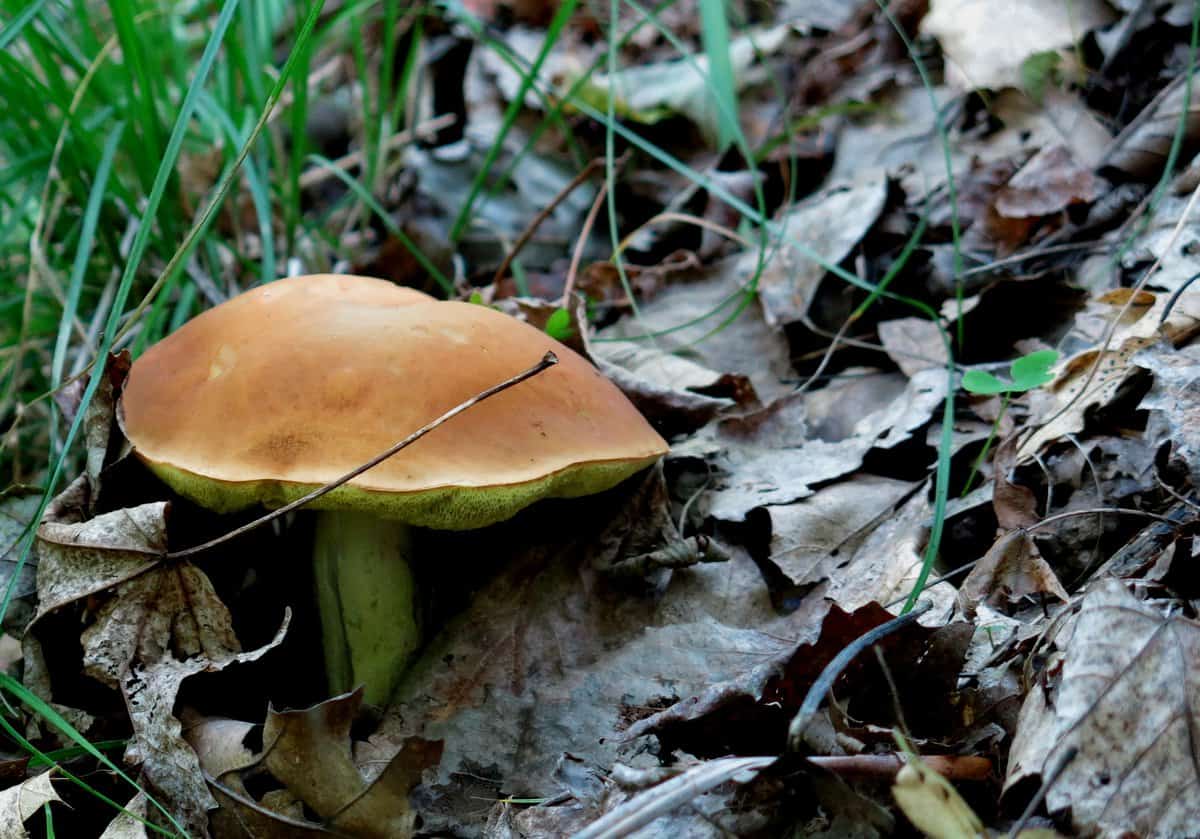
Identification
After misidentifying it a couple times, we finally came upon Hemi-Leccinum subglabripes. If you know a thing or two about boletes, it gets easier to make some distinctions about it.
Firstly these are yellow, very yellow, yellow stem with bright yellow pores and a light brown cap that darkens with age. It's shape is similar to a Leccinum in that it has a long, thin stem, and has pores instead of gills. It's stem lacks the bulbous-ness you sometimes see in boletes though.
Another tell tale characteristic is that these don't bruise at all when sliced, but what's truly confusing is that even though it's placed in the Leccinum family right now, it lacks the little black hairs or fibrils on it's stem which is indicative of the species.
Cooking
In the kitchen, these act like any other bolete, they love to be dried and it concentrates their flavor. They're a natural to add to soups, sauces and gravies and make decent pickles too.
There is one thing that I would mention though as far as eating goes, and that's that until further research is done, I would be careful about eating them fresh. I have had severe gastro intestinal distress from certain members of the Leccinum family, but only fresh, and under-cooked.
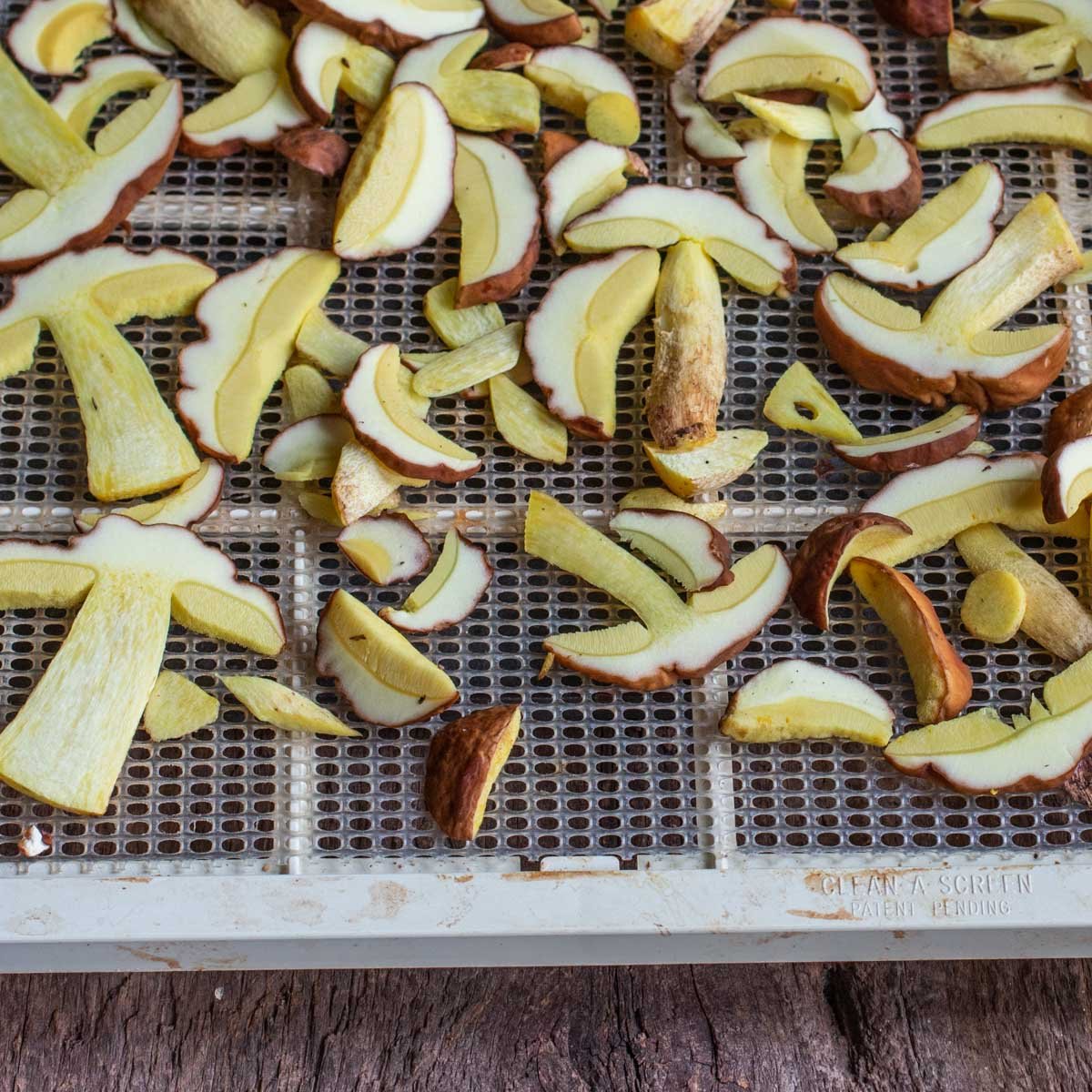
I have never had a problem eating any species of Leccinum dried. Since their flavor is much richer post drying, and since being a bolete they have a relatively short shelf life, I suggest you dry these to enjoy them, or make sure you cook them very well.
Recipes
Recipes I've made for boletes or where they can be substituted. These will make a great addition to mushroom blends, fresh or dried.
- Wild Mushroom Conserve
- Wild Mushroom Duxelles
- Dried Wild Mushroom Duxelles
- Fresh Bolete Butter
- Fresh Boletes With Radish Snaps and Peas
- Fresh Bolete Julienne
- Baby Chicken With Bolete-Wine Sauce
- Mixed Wild Mushrooms With Persillade
- Cream of Bolete Soup With Black Walnut Pesto
- Shrimp With Bolete Infused Soy-Brandy Cream

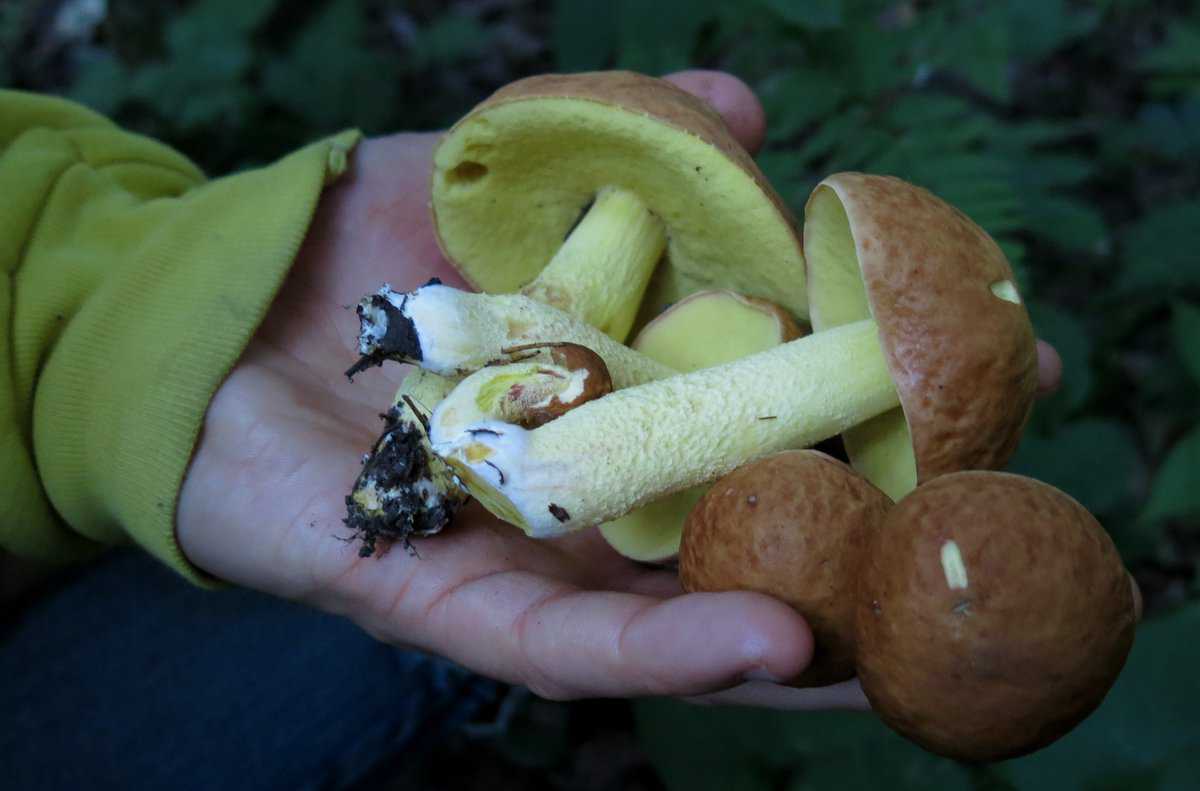
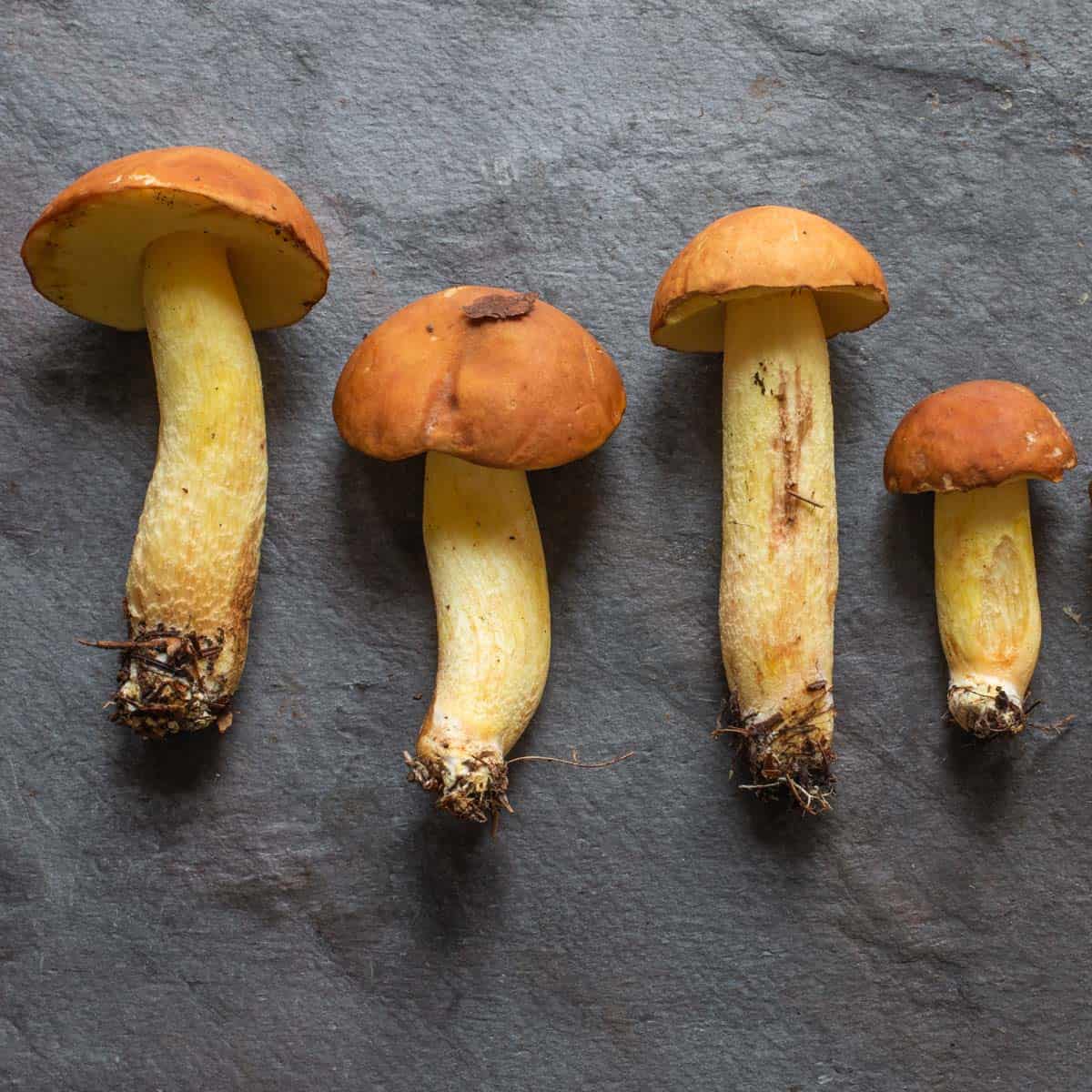
Joycel
Any idea what color spore print these have?
Alan Bergo
They're so distinctive and easy to recognize I've never bothered to check.
Eleni
Hello! I picked some young Hemileccinum boletes in Anchorage and dried them gently in the oven. As they are desiccating, they smell very intense- like a gym full of funky socks. Is this typical? Will they taste this way when I reconstitute them? They still look nice and yellow as they dry. Thanks for any insight you can provide!
Alan Bergo
Taste and flavor preferences vary from person to person. They smell rich and mushroomy to me, similar to other Leccinum Eastern European mushroom hunters love to pick. You picked them, so I suggest you at least try them. Rehydrate them and add to a sauce or soup, or consider using them in a blend for something like my Italian Mushroom Soup. Make sure to cook with them, season them, etc before you pass judgement as flavors can change alot during cooking.
Baha
Hi I'm currently in the north Ontario and found great number of them all over this region. Thank you for your article Alan. Good memories of BC. CHEERS !
Alan Bergo
Baha!! Yeah these are a fun one.
Max Reinhardt
Have some in the fridge rn having awaited id. Might try with some eggs and lobster mushrooms in the morn.
Alan Bergo
Just make sure to cook them thoroughly if you don't dehydrate them. Leccinum are known for GI upset when undercooked, and I'm speaking from experience there.
Jim
I bring mine to a boil when I but them in gravy.
Stephanie Dareing
I have been pulling these up for this first year of
Them showing up. Not knowing anything about
Them, I disposed them!
Maybe we will try them.
Alan Bergo
They're a great little mushroom. I don't see them too often up here in MN.
Kate
Wondering which leccinums gave you intestinal distress? Been reading about "red capped" leccinums being the culprit but I'm yet to experience this myself, though I've always consumed previously dried leccinums.
Alan Bergo
Hi Kate, red-capped Leccinums picked under pine were the culprits. Id be careful with red-capped aspen boletes too.
Kate
Hmm.. thanks for the warning, was the cap really red, or are we talking about a birch bolete like... sort of orange?
Alan Bergo
It was very, very red, almost sanguine. Check my post on scaber stalks for some pictures.
Kate
Good to know, thank you